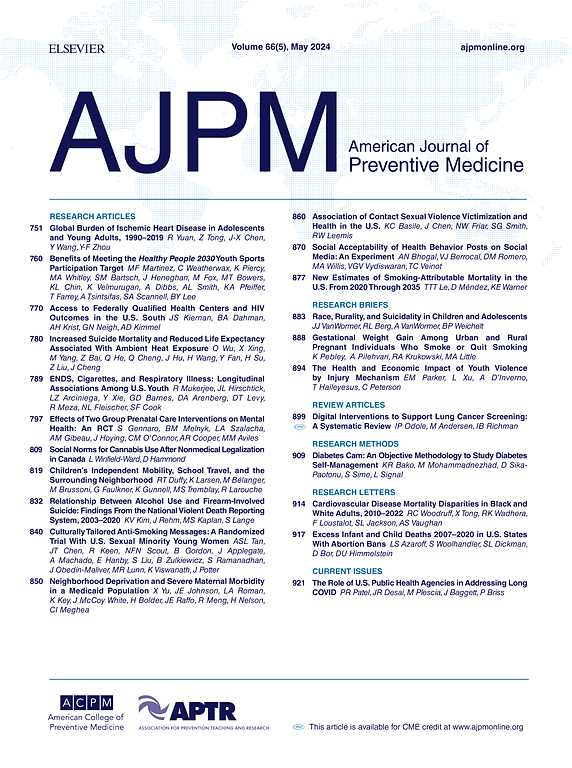A Comparative Study on the Transformation Pathways of Public Health Systems in China, the United States, and South Korea from an International Perspective
IF 4.5
2区 医学
Q1 MEDICINE, GENERAL & INTERNAL
引用次数: 0
Abstract
Objective
This study aims to systematically analyze the pathway differences in the transformation of public health systems from crisis response-oriented to health governance-oriented models in China, the United States, and South Korea through an international comparative perspective. It focuses on revealing the impact mechanism of institutional adaptability on public health governance effectiveness, providing theoretical references and practical insights for the global transformation of public health systems.
Subjects and Methods
(1) Institutional Design: China’s restructuring of the "central-local" governance framework, the U.S.’s community health governance innovation under federalism, and South Korea’s revision of the National Health Insurance Act; (2) Practical Pathways: China’s integration of the Patriotic Health Campaign with grassroots service upgrades, the U.S.’s risk prediction models developed through collaboration between the Centers for Disease Control and Prevention (CDC) and commercial insurers, and South Korea’s digital upgrading of the "Epidemic Control Tower"; (3) Common Logic: Extraction of institutional adaptability characteristics in the transformations of all three countries through policy text analysis and governance effectiveness evaluation.
Results
(1) China integrates vertical management with regularized health promotion to upgrade grassroots public health capabilities, transitioning from "passive epidemic response" to "proactive health management"; (2) the U.S. optimizes resource allocation through market-driven mechanisms and community governance innovation, leveraging social capital to bridge healthcare gaps; (3) South Korea establishes a legislation-driven "digital-prevention" ecosystem, integrating epidemic data with chronic disease management to achieve lifelong health coverage.
Conclusions
Institutional adaptability—enhancing administrative efficiency, activating market mechanisms, and breakthroughs in technological innovation—has effectively resolved challenges in public health systems.
国际视野下的中、美、韩公共卫生体制转型路径比较研究
目的通过国际比较的视角,系统分析中、美、韩三国公共卫生体系从危机应对模式向卫生治理模式转变的路径差异。重点揭示制度适应性对公共卫生治理有效性的影响机制,为全球公共卫生体制转型提供理论参考和实践见解。(1)制度设计:中国“中央-地方”治理框架的重构、美国联邦制下的社区卫生治理创新、韩国《国民健康保险法》的修订;(2)实践路径:中国将爱国卫生运动与基层服务升级相结合,美国疾病预防控制中心与商业保险公司合作开发风险预测模型,韩国“疫情控制塔”数字化升级;(3)共同逻辑:通过政策文本分析和治理有效性评价,提取三国转型中的制度适应性特征。结果(1)中国将垂直管理与正规化健康促进相结合,提升基层公共卫生能力,实现了从“被动应对疫情”向“主动健康管理”的转变;(2)美国通过市场驱动机制和社区治理创新优化资源配置,撬动社会资本弥合医疗缺口;(3)韩国建立以立法为主导的“数字预防”生态系统,将疫情数据与慢性病管理相结合,实现终身健康覆盖。结论制度适应性——提高行政效率、激活市场机制、突破技术创新——有效解决了公共卫生系统面临的挑战。
本文章由计算机程序翻译,如有差异,请以英文原文为准。
求助全文
约1分钟内获得全文
求助全文
来源期刊

American Journal of Preventive Medicine
医学-公共卫生、环境卫生与职业卫生
CiteScore
8.60
自引率
1.80%
发文量
395
审稿时长
32 days
期刊介绍:
The American Journal of Preventive Medicine is the official journal of the American College of Preventive Medicine and the Association for Prevention Teaching and Research. It publishes articles in the areas of prevention research, teaching, practice and policy. Original research is published on interventions aimed at the prevention of chronic and acute disease and the promotion of individual and community health.
Of particular emphasis are papers that address the primary and secondary prevention of important clinical, behavioral and public health issues such as injury and violence, infectious disease, women''s health, smoking, sedentary behaviors and physical activity, nutrition, diabetes, obesity, and substance use disorders. Papers also address educational initiatives aimed at improving the ability of health professionals to provide effective clinical prevention and public health services. Papers on health services research pertinent to prevention and public health are also published. The journal also publishes official policy statements from the two co-sponsoring organizations, review articles, media reviews, and editorials. Finally, the journal periodically publishes supplements and special theme issues devoted to areas of current interest to the prevention community.
 求助内容:
求助内容: 应助结果提醒方式:
应助结果提醒方式:


